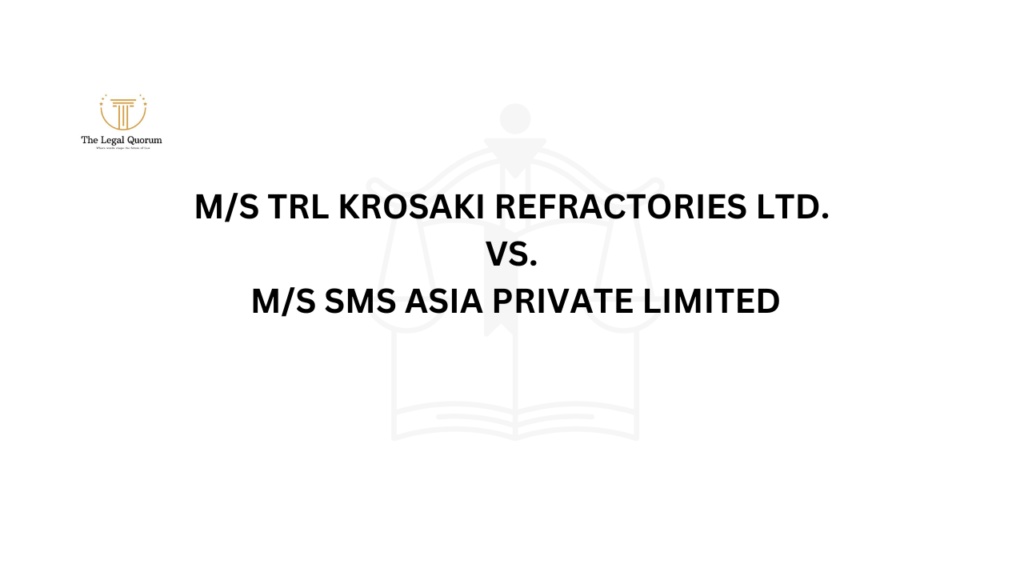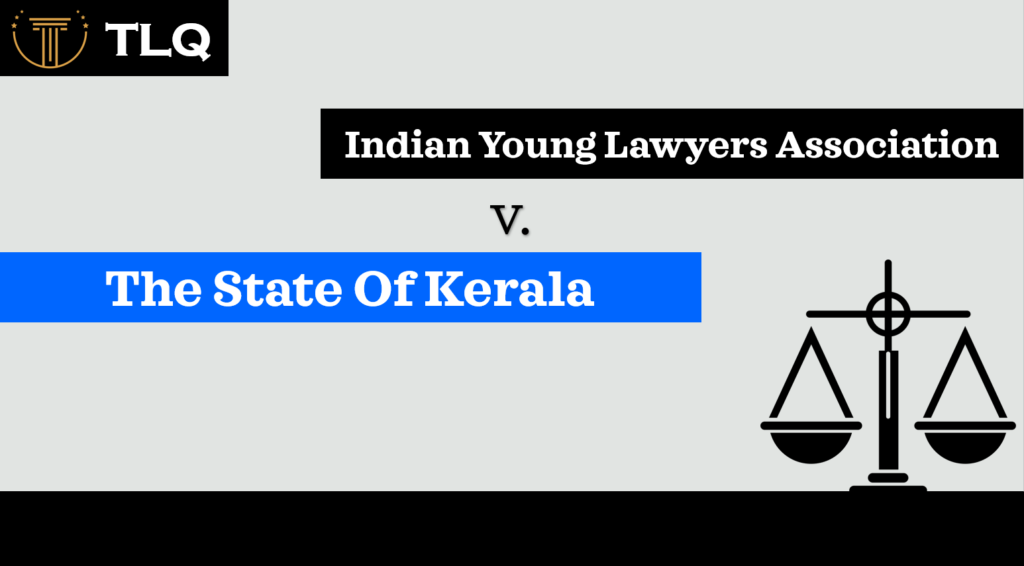Published On: 6th December, 2023
Waste, commonly seen as no longer useful to individuals, is addressed through waste management, which involves activities like segregation, collection, transportation, recycling, and disposal.[1] Waste management encompasses the tasks and procedures required to handle garbage from its creation to its disposal. This entails supervision and control in addition to garbage collection, transportation, processing, and removal.
Solid waste management involves proper segregation and scientific recycling of components, representing an ideal approach. Commonly referred to as SWM, it encompasses various functions such as collection, transport, processing, treatment, and disposal of solid waste. Evolving from simple dumping, SWM now includes sophisticated options like reuse, recycling, incineration with energy recovery, advanced landfill design, and alternative technologies. The goal is to establish an environmentally, economically sustainable, and socially acceptable waste management system tailored to a specific region.[2]
Population growth and enhanced lifestyles have contributed to a rise in solid waste in India’s urban and rural areas. Solid waste from these areas traditionally differs, but urbanization and the “use and throw” culture are narrowing the gap. Rural waste is mainly biodegradable, while urban waste contains more non-biodegradable elements such as plastics and packaging.[3]
Inadequate waste management, encompassing deficient collection and disposal systems, leads to air pollution, water, and soil contamination. Open, unsanitary landfills contaminate drinking water, posing health risks and transmitting diseases. The scattering of debris harms ecosystems, while hazardous substances from electronic or industrial waste strain the health of urban residents and the environment.[4]
Technological advancements in solid waste management (SWM) have given rise to energy-from-waste solutions, crucial for reducing waste volume and generating renewable energy and organic manure. Despite their ideal placement after segregation, collection, and recycling, many waste-to-energy plants in India face underutilization. Proposed installations of waste-to-compost and bio-methanation plants aim to alleviate the burden on landfill sites, especially considering that over 50% of India’s solid waste is biodegradable, bio-methanation, an effective method for processing biodegradable waste, remains underexploited. Segregating biodegradable waste could significantly address waste management challenges. Additionally, the presence of toxic and non-biodegradable components in e-waste poses environmental and occupational health risks, underscoring the need for proper handling and recycling processes.[5]
A study in the Journal of Urban Management (December 2021) reveals that India generates 62 million metric tons (MT) of waste annually, including 7.9 MT of hazardous waste, 5.6 MT of plastic waste, 1.5 MT of e-waste, and 0.17 MT of biomedical waste. The Central Pollution Control Board (CPCB) projects a rise to 165 MT by 2030. The solid waste management market in India involves collection, transportation, treatment, and disposal.[6] The waste generation in Delhi alone has escalated from 4000 tons per day in 2000 to 8360 tons per day in 2015, with a projected increase to 17,000–25,000 tons per day by 2021. Despite approximately 70%–80% of municipal solid waste (MSW) being collected, the majority is disposed of in open dumps on streets. Only 9% of the collected MSW undergoes composting, the sole treatment option available, while the remaining mixed waste is deposited in open landfills at the city’s periphery.[7] Collection and transportation dominate due to inadequate infrastructure. Treatment and disposal are expected to grow, reflecting a focus on sustainable practices. Municipal authorities face challenges managing waste due to financial constraints and technical limitations. Government initiatives like Swachh Bharat and smart city development, along with amended SWM rules, aim to encourage integrated waste management, segregation, and recovery practices nationwide.[8]
The Ministry of Environment, Forest, and Climate Change amended India’s Solid Waste Management (SWM) rules in 2016, aligning with the circular economy principles of reduce, reuse, and recycle. The Central Pollution Control Board (CPCB) enforces these rules strictly, motivating Urban Local Bodies (ULBs) nationwide to establish integrated waste management systems. The encouraged practices include wet and dry segregation, source-specific collection, home composting/bio-methanation, and the recovery of material and energy from waste.[9]
The basic principles of Solid Waste Management (SWM) include the 4Rs: Refuse, Reduce, Reuse, and Recycle. This involves avoiding unnecessary purchases, minimizing garbage generation, maximizing the reuse of items, and recycling materials; Segregation at the source is emphasized, urging the separation of organic and inorganic waste in different bins to facilitate efficient recycling; Different types of solid wastes should undergo specific treatments tailored to their nature; and treatment should ideally occur at the nearest possible point, promoting decentralized waste management, even at the household level.[10]
Knowledge is recognized as a crucial factor influencing environmental action. Higher levels of environmentally relevant knowledge are believed to significantly impact environmental behavior. There is a distinguishment between abstract knowledge focusing on general environmental issues and concrete knowledge related to local services. Knowledge is a key predictor of behavior and a lack of knowledge can diminish self-efficacy and hinder individuals from participating in environmental actions.[11]
The government has initiated various ways to manage waste and influence the participation of the general public. The Swachh Bharat Abhiyan, or Clean India Mission, was a campaign aimed at making Indian cities clean and achieving a cleaner India by 2019. Involving citizens, especially youth, NGOs, and local authorities, the initiative encourages people to photograph and report garbage, promoting a before-and-after approach to cleanliness. The Swachh Bharat Pledge, inspired by Mahatma Gandhi’s vision, emphasizes individual commitment to cleanliness, urging citizens to devote 100 hours per year to voluntary work for cleanliness. The pledge includes a personal commitment to avoid littering, encourage cleanliness in the family, locality, village, and workplace, and propagate the message of Swachh Bharat Abhiyan. The campaign also focuses on educating school children about cleanliness, hygiene, and the importance of handwashing. Overall, the Swachh Bharat Abhiyan seeks to foster a culture of cleanliness and civic responsibility throughout the country.[12] With a surprising progressive leap, Menstrual Hygiene Management (MHM) is an integral part of waste management under the Swachh Bharat Mission Grameen (SBM-G) campaign, underlining the importance of this otherwise taboo topic that impacts not just health and well-being, but also education and overall development of girls and women in the country.[13]
Following the success of the Swachh Bharat Mission (SBM) model, countries such as Nigeria, Indonesia, and Ethiopia have adopted similar approaches. Encouraged by the effective and participative response within the country, the Government of India initiated Phase II of the Swachh Bharat Mission as SBM II (Urban) in 2020. This phase specifically concentrates on sustaining the Open Defecation-Free status and enhancing Solid and Liquid Waste Management in both rural areas and urban centers.[14]
The Solid Waste Management Rules, 2016,[15] established by the Ministry of Environment, Forest, and Climate Change in India, aims to regulate the management of solid waste. Key objectives in this include promoting environmentally sound practices in segregation, collection, processing, and disposal of solid waste. The rules assign specific roles and responsibilities to various stakeholders, including urban local bodies, waste generators, pickers, processors, and disposal facility operators. The emphasis is on encouraging waste reduction, reuse, recycling, and recovery, prioritizing these options over landfilling or incineration. The rules introduce measures such as user fees for waste services and fines for littering and non-segregation. The scope encompasses all types of solid waste, covering municipal, industrial, construction and demolition, hazardous, and bio-medical waste, except those regulated by specific rules.[16]
The Plastic Waste Management Rules in India, specifically the Plastic Waste Management Amendment Rules of 2021 and the 2nd Amendment of 2022, have been implemented by the Ministry of Environment, Forest, and Climate Change. The primary goal is to phase out single-use plastic by 2022, particularly targeting items with low utility and high littering potential.[17] The 2022 amendments focus on Extended Producer Responsibility for Plastic Packaging[18], incorporating guidelines into law. Plastic packaging waste not covered by the phase-out of single-use items is to be managed sustainably through the Extended Producer Responsibility of the Producer, Importer, and Brand Owner. These regulations reflect India’s commitment to environmentally friendly plastic waste management.
With the various challenges posed to sustainable waste management, one way to overcome them is the idea of ‘The Waste Bank’, which is a waste management model based on the 3-R principle (Reduce, Reuse, Recycle) operating as a business. It involves a system to manage, sort, and distribute waste to other treatment facilities or those in need, promoting recycling and environmentally-friendly practices. This solution encourages participation from individuals, businesses, and communities to collectively make a significant impact on waste management, emphasizing household recycling and fostering sustainable lifestyles.[19]
Also, at the household level, waste segregation into biodegradable and non-biodegradable categories is essential, with further separation into specific waste types, as per Solid Waste Management Rules 2016. Doorstep collectors must prevent waste mixing. Financial incentives will also drive residents to sell recyclables, while community-based initiatives, involving groups with abstract knowledge, can supervise and promote waste management. Advocacy tools and sustained awareness campaigns are crucial, targeting diverse population segments. General knowledge of waste management correlates with a willingness to engage, necessitating informative campaigns. Agreements with waste workers and sliding fiscal incentives based on segregation frequency can encourage proper waste disposal. Non-monetary incentives, such as rewards, reinforce positive behavior. Stakeholder involvement, including NGOs, RWAs, the government, private waste management companies, and product manufacturers, is crucial for effective waste management. Collaborative efforts can also reduce the burden on waste collection vehicles and improve overall sustainability.[20]
The management of solid waste has gained significant attention from the Central and State Governments, as well as local authorities in India. Various partnerships and alliances exist in this field, involving public-private, community-public, and private-private arrangements. Key actors include the public sector, private-formal sector, private-informal sector, and community representatives (NGOs). Partnerships encompass public-private, public-community, private-private, and public-private-community collaborations.
The National Solid Waste Association of India (NSWAI) plays a crucial role, serving as a non-profit organization involved in solid waste management and collaborates with the Ministry of Environment and Forest (MoEF) and is a member of the International Solid Waste Association (ISWA). Regulatory frameworks, such as the Municipal Waste Management and Handling Rules 2000, guide practices in managing urban waste.
Government initiatives, like the Jawaharlal Nehru National Urban Renewal Mission (JNNURM) and the National Urban Sanitation Policy (NUSP), contribute to waste management strategies. The Ministry of Environment and Forests issued Municipal Solid Waste Rules in 2000, aiming to standardize and enforce solid waste management practices in urban areas. Collaborative efforts involve various stakeholders, including NGOs, RWAs, the government, private waste management companies, and product manufacturers. Financial incentives, agreements with waste workers, and non-monetary incentives are suggested to encourage proper waste disposal. A household-centric approach, rewarding segregation efforts, and showcasing the benefits of waste segregation are recommended. India’s waste management landscape involves a mix of partnerships, regulatory frameworks, government initiatives, and collaborative efforts from diverse stakeholders, all working towards standardized and sustainable waste management practices in urban areas.[21]
In 2019, a government report outlined recommendations for Solid Waste Management (SWM) in India, including transforming landfills into parks, expanding Waste to Compost plants, and formalizing the informal recycling sector. Subsequently, a 2021 report detailed actions taken on these recommendations, emphasizing notable progress in door-to-door garbage collection and solid waste processing. A joint report by NITI Aayog and the Centre for Science and Environment, released in December 2021, showcased successful advancements in India’s waste management system. Notably, three cities have embraced a ‘zero-landfill model’ emphasizing waste reduction through recovery and recycling, eliminating the need for new landfills. Ambikapur achieved 100% collection, segregation, and treatment of waste, while another Maharashtra city attained a 100% rate in collecting and processing sanitary waste. The utilization of solar power and radio frequency technology for garbage collection and treatment has also proven effective in various Indian cities.[22]
In conclusion, waste management in India is a pressing environmental challenge exacerbated by population growth and changing lifestyles. Key findings reveal alarming waste generation statistics, emphasizing the need for robust waste management strategies. Government initiatives, including Swachh Bharat and the amended Solid Waste Management Rules, aim to instigate nationwide behavioral changes and integrated waste management practices. The country faces critical challenges with escalating waste generation, highlighting the need for innovative solutions. The 4Rs (Refuse, Reduce, Reuse, Recycle) form the basis of effective SWM, emphasizing minimizing waste generation and promoting efficient recycling. The Swachh Bharat Abhiyan engages citizens and local authorities in a collective effort to achieve a cleaner India. The Plastic Waste Management Rules also, with recent amendments, underline India’s commitment to phasing out single-use plastic and promoting extended producer responsibility. In conclusion, addressing India’s waste management challenges requires collaborative efforts, sustained awareness, and innovative solutions. While challenges are significant, a comprehensive and integrated approach can pave the way for a cleaner and more sustainable future.
Reference(s):
[1] Topic: Waste management in India. (2021). Statista; Statista. https://www.statista.com/topics/5586/waste-management-india/#topicOverview
[2] Agarwal, R., Chaudhary, M., & Singh, J. (2015). Waste management initiatives in India for human well being. European Scientific Journal.
[3] Agarwal, R., Chaudhary, M., & Singh, J. (2015). Waste management initiatives in India for human well being. European Scientific Journal.
[4] Environment, U. (2017). Solid waste management. UNEP – UN Environment Programme. https://www.unep.org/explore-topics/resource-efficiency/what-we-do/cities/solid-waste-management
[5] India’s challenges in waste management. (2014). Downtoearth.org.in. https://www.downtoearth.org.in/blog/waste/india-s-challenges-in-waste-management-56753
[6] 274. (2021). India Solid Waste Management. International Trade Administration | Trade.gov. https://www.trade.gov/market-intelligence/india-solid-waste-management
[7] Bhawal Mukherji, S., Sekiyama, M., Mino, T., & Chaturvedi, B. (2016). Resident knowledge and willingness to engage in waste management in Delhi, India. Sustainability, 8(10), 1065.
[8] 274. (2021). India Solid Waste Management. International Trade Administration | Trade.gov. https://www.trade.gov/market-intelligence/india-solid-waste-management
[9] 274. (2021). India Solid Waste Management. International Trade Administration | Trade.gov. https://www.trade.gov/market-intelligence/india-solid-waste-management
[10] Agarwal, R., Chaudhary, M., & Singh, J. (2015). Waste management initiatives in India for human well being. European Scientific Journal.
[11] Bhawal Mukherji, S., Sekiyama, M., Mino, T., & Chaturvedi, B. (2016). Resident knowledge and willingness to engage in waste management in Delhi, India. Sustainability, 8(10), 1065.
[12] Ghosh, S. K. (2016). Swachhaa Bharat Mission (SBM)–a paradigm shift in waste management and cleanliness in India. Procedia Environmental Sciences, 35, 15-27.
[13] Success Story: Swachh Bharat Mission. (2022). Pib.gov.in. https://pib.gov.in/Pressreleaseshare.aspx?PRID=1817735
[14] https://www.cnbctv18.com. (2023, September 16). World Cleanup Day 2023: A look at India’s sanitation success under Swachh Bharat Mission. Cnbctv18.com; CNBCTV18. https://www.cnbctv18.com/india/world-cleanup-day-2023-a-look-at-india-sanitation-success-under-swachh-bharat-mission-17821371.htm
[15] THE SOLID WASTE MANAGEMENT RULES (2016) https://www.hspcb.org.in/content/laws/msw/MSW_Rules.pdf
[16] Salient Features of SOLID WASTE MANAGEMENT RULES, 2016. (n.d.). Retrieved November 15, 2023, from https://imgs.mongabay.com/wp-content/uploads/sites/30/2023/09/12155228/Salient_features_SWM_Rules.pdf
[17] Government notifies the Plastic Waste Management Amendment Rules, 2021, prohibiting identified single use plastic items by 2022. (2021). Pib.gov.in. https://pib.gov.in/PressReleaseIframePage.aspx?PRID=1745433
[18] CPCB | Central Pollution Control Board. (2019). Cpcb.nic.in. https://cpcb.nic.in/rules-4/
[19] Suardi, L. R., Gunawan, B., Arifin, M., & Iskandar, J. (2018). A review of solid waste management in waste bank activity problems. International Journal of Environment, Agriculture and Biotechnology, 3(4), 264433.
[20] Bhawal Mukherji, S., Sekiyama, M., Mino, T., & Chaturvedi, B. (2016). Resident knowledge and willingness to engage in waste management in Delhi, India. Sustainability, 8(10), 1065.
[21] Agarwal, R., Chaudhary, M., & Singh, J. (2015). Waste management initiatives in India for human well being. European Scientific Journal.
[22] Philipp, J. (2022, September 10). How India’s Waste Management System is Causing Health Issues – The Borgen Project. The Borgen Project. https://borgenproject.org/indias-waste-management/



